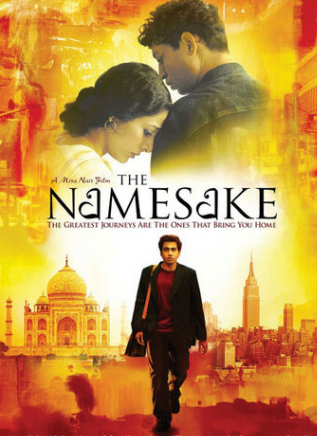
Un Nom pour un autre (The Namesake)

100% est d'accord avec la cote



Un Nom pour un autre (The Namesake)

100% est d'accord avec la cote
L'avis de Mediafilm
Attachée à ses racines indiennes mais enracinée dans la société américaine, Mira Nair s'intéresse depuis toujours à cette dualité culturelle qu'elle porte en elle (MISSISSIPPI MASALA, MONSOON WEDDING). Le roman à succès de Jhumpa Lahiri lui offre à nouveau l'occasion d'explorer ce thème à travers les déboires d'une famille immigrante sur près de deux décennies. Revenant à des ambitions plus modestes après l'échec commercial du somptueux VANITY FAIR, la réalisatrice a conçu un récit elliptique habile, porté par une mise en scène sobre et attentive aux déchirements intérieurs des personnages. Même si la cinéaste oppose parfois les beautés de l'Inde à la grisaille de sa terre d'adoption, au final son portrait évite tout manichéisme. Et cela se reflète dans les nuances qu'apportent les interprètes. Ainsi, Tabu et Irrfan Khan forment un couple émouvant aux côtés de Kal Penn, qui exprime avec justesse la révolte de son personnage. Celui-ci saura d'ailleurs toucher tous ceux qui vivent en équilibre entre deux cultures distinctes.
Synopsis

Contrairement à ses parents, restés attachés à la culture indienne malgré leur installation à New York au milieu des années 1970, Gogol s'est, comme sa soeur, parfaitement intégré à la société américaine. Au cours d'un voyage en Inde, l'aspirant architecte s'éprend de Maxine, une jeune et riche Étasunienne de race blanche. À son retour, il éprouve une difficulté croissante à assumer son prénom, objet de moqueries. L'irruption d'un drame familial va bientôt forcer Gogol à mieux comprendre le bagage culturel de ses parents, dont l'union avait été autrefois arrangée par leurs familles respectives. (sortie en salle le 23 mars 2007)
Année
2006Genre
Drame psychologiqueDurée
122 min.Origine
États-UnisInformation
Classification

Genre
Drame psychologique
Année
2006
Durée
122 min.
Réalisation
Pays
États-Unis
Distribution
20th Century Fox